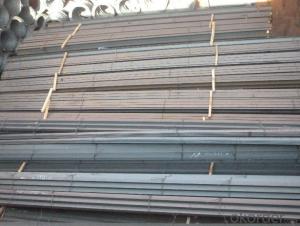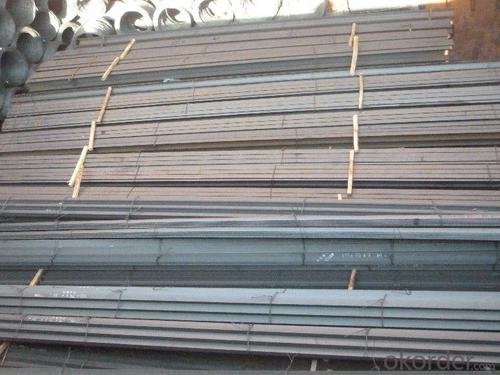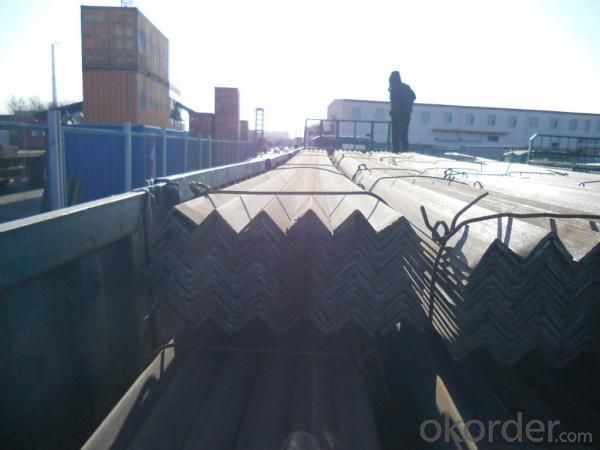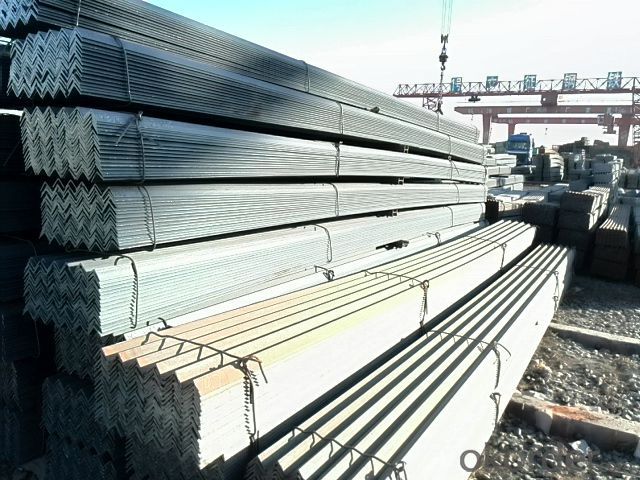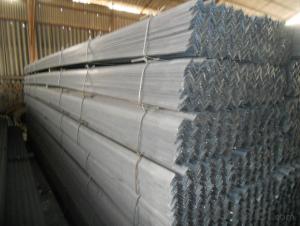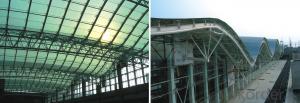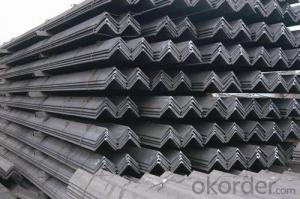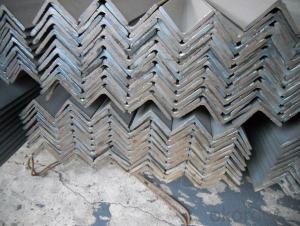Hot Rolled Prime Alloy Steel Angles Metal for Structures
- Loading Port:
- Tianjin
- Payment Terms:
- TT or LC
- Min Order Qty:
- 1000 m.t.
- Supply Capability:
- 3500 m.t./month
OKorder Service Pledge
OKorder Financial Service
You Might Also Like
OKorder is offering Hot Rolled Prime Alloy Steel Angles Metal for Structures at great prices with worldwide shipping. Our supplier is a world-class manufacturer of steel, with our products utilized the world over. OKorder annually supplies products to African, South American and Asian markets. We provide quotations within 24 hours of receiving an inquiry and guarantee competitive prices.
Product Applications:
Hot Rolled Prime Alloy Steel Angles Metal for Structures are ideal for structural applications and are widely used in the construction of buildings and bridges, and the manufacturing, petrochemical, and transportation industries.
Product Advantages:
OKorder's Hot Rolled Prime Alloy Steel Angles Metal for Structures are durable, strong, and wide variety of sizes.
Main Product Features:
· Premium quality
· Prompt delivery & seaworthy packing (30 days after receiving deposit)
· Can be recycled and reused
· Mill test certification
· Professional Service
· Competitive pricing
Product Specifications:
Manufacture: Hot rolled
Grade: Q195 – 235
Certificates: ISO, SGS, BV, CIQ
Length: 6m – 12m, as per customer request
Packaging: Export packing, nude packing, bundled
EQUAL ANGLES SIZES |
| ||
a(mm) | a1(mm) | thickness(mm) | length |
25 | 25 | 2.5---3.0 | 6M/12M |
30 | 30 | 2.5---4.0 | 6M/12M |
38 | 38 | 2.5 | 6M/12M |
38 | 38 | 3.0---5.0 | 6M/12M |
40 | 40 | 3.0---6.0 | 6M/12M |
50 | 50 | 3 | 6M/12M |
50 | 50 | 3.7---6.0 | 6M/9M/12M |
60 | 60 | 5.0---6.0 | 6M/9M/12M |
63 | 63 | 6.0---8.0 | 6M/9M/12M |
65 | 65 | 5.0---8.0 | 6M/9M/12M |
70 | 70 | 6.0---7.0 | 6M/9M/12M |
75 | 75 | 5.0---10.0 | 6M/9M/12M |
80 | 80 | 6.0---10.0 | 6M/9M/12M |
90 | 90 | 6.0---10.0 | 6M/9M/12M |
100 | 100 | 6.0---12.0 | 6M/9M/12M |
120 | 120 | 8.0-12.0 | 6M/9M/12M |
125 | 125 | 8.0---12.0 | 6M/9M/12M |
130 | 130 | 9.0-12.0 | 6M/9M/12M |
140 | 140 | 10.0-16.0 | 6M/9M/12M |
150 | 150 | 10---15 | 6M/9M/12M |
160 | 160 | 10---16 | 6M/9M/12M |
180 | 180 | 12---18 | 6M/9M/12M |
200 | 200 | 14---20 | 6M/9M/12M |
FAQ:
Q1: Why buy Materials & Equipment from OKorder.com?
A1: All products offered byOKorder.com are carefully selected from China's most reliable manufacturing enterprises. Through its ISO certifications, OKorder.com adheres to the highest standards and a commitment to supply chain safety and customer satisfaction.
Q2: How do we guarantee the quality of our products?
A2: We have established an advanced quality management system which conducts strict quality tests at every step, from raw materials to the final product. At the same time, we provide extensive follow-up service assurances as required.
Q3: How soon can we receive the product after purchase?
A3: Within three days of placing an order, we will arrange production. The normal sizes with the normal grade can be produced within one month. The specific shipping date is dependent upon international and government factors, the delivery to international main port about 45-60days.
Images:
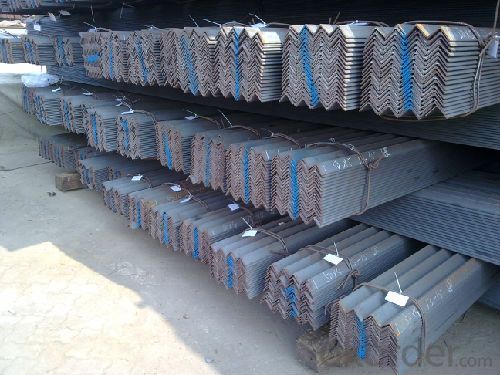
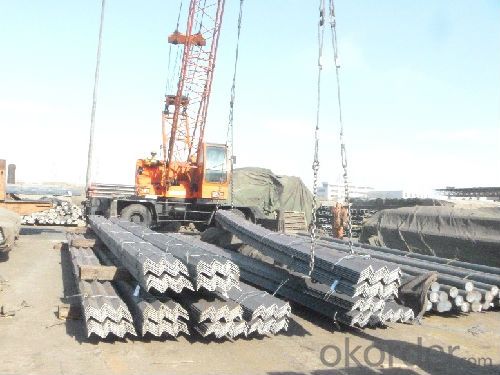
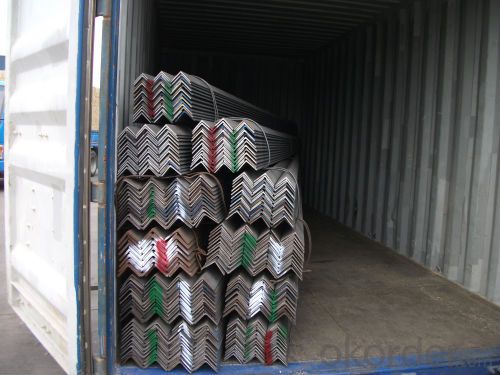
- Q: Can steel angles be used for pipe supports or hangers?
- Yes, steel angles can be used for pipe supports or hangers. Steel angles provide structural support and stability for pipes, making them suitable for various applications in the construction and industrial sectors. The L-shape design of steel angles allows for easy attachment to walls, ceilings, or other structural members, providing a sturdy base for suspending or supporting pipes. Additionally, the strength and durability of steel angles make them capable of withstanding the weight and pressure exerted by the pipes, ensuring long-term stability and reliability. Overall, steel angles are a commonly used and effective choice for pipe supports and hangers.
- Q: Can steel angles be used for pedestrian bridges or walkways?
- Yes, steel angles can be used for pedestrian bridges or walkways. Steel angles are commonly used in construction due to their strength, durability, and versatility. They can be easily fabricated and welded to create the desired structural elements for bridges and walkways. Steel angles provide excellent load-bearing capabilities, making them suitable for supporting pedestrian traffic. Additionally, the corrosion-resistant properties of steel make it an ideal choice for outdoor applications where exposure to weather elements is a concern. Overall, steel angles are a popular choice for pedestrian bridges and walkways due to their reliability and ability to meet the necessary structural requirements.
- Q: Can steel angles be used for sound barriers?
- Yes, steel angles can be used for sound barriers. Steel angles are commonly used in construction and can be suitable for sound barrier applications due to their durability, strength, and ability to absorb and block sound.
- Q: Are steel angles suitable for earthquake-resistant structures?
- Because of their high strength and ductility properties, steel angles are often used in earthquake-resistant structures. Their angular shape enables them to effectively withstand lateral forces resulting from seismic events. Steel angles have the capacity to absorb and disperse energy during earthquakes, making them suitable for withstanding the dynamic loads produced by ground movements. Moreover, connecting and joining steel angles is a straightforward process, which guarantees a high level of structural integrity and overall stability in buildings. These factors contribute to steel angles being a preferred option for earthquake-resistant structures, as they provide a dependable and long-lasting solution for minimizing the impact of seismic events.
- Q: What are the common thicknesses of steel angles?
- The common thicknesses of steel angles vary depending on the specific application and industry requirements. However, some commonly used thicknesses for steel angles include 1/8 inch, 3/16 inch, 1/4 inch, 3/8 inch, and 1/2 inch. These thicknesses are often used in construction, manufacturing, and structural applications. It is important to note that thicker steel angles provide increased strength and durability, while thinner angles are suitable for lighter applications. The choice of thickness ultimately depends on the specific load-bearing requirements and structural design considerations.
- Q: Can steel angles be used for decorative trims?
- Certainly! Decorative trims can indeed utilize steel angles. Steel angles possess versatility, enabling them to be cut, shaped, and fabricated into diverse decorative components. Their application extends to both interior and exterior spaces, imparting a contemporary and industrial flair. By employing paint or powder coating, steel angles can be adorned in an extensive array of colors to suit any desired aesthetic. Utilize them as decorative trims encircling windows, doors, cabinets, furniture, or even as accent pieces adorning walls or ceilings. Due to their enduring durability and strength, steel angles emerge as a long-lasting and low-maintenance choice for decorative trims.
- Q: Can steel angles be used for support structures in telecommunications installations?
- Yes, steel angles can be used for support structures in telecommunications installations. Steel angles provide strength, stability, and durability, making them suitable for supporting heavy equipment such as antennas, cables, and other telecommunications infrastructure.
- Q: What are the different load-carrying capacities for steel angles?
- The load-carrying capacities for steel angles vary depending on factors such as the size, shape, and material of the angle, as well as the specific application and installation method. It is recommended to consult engineering resources, industry standards, or a structural engineer for accurate load-carrying capacity information.
- Q: How do you calculate the weight-bearing capacity of a steel angle?
- To calculate the weight-bearing capacity of a steel angle, you need to consider its dimensions, material properties, and loading conditions. The weight-bearing capacity can be calculated using engineering formulas and techniques such as the Euler formula or the AISC Manual. These calculations take into account factors like the cross-sectional area, moment of inertia, and the applied loads to determine the maximum load the steel angle can support without failure.
- Q: Can steel angles be used in architectural sculptures and installations?
- Architectural sculptures and installations can indeed incorporate steel angles. These angles possess remarkable versatility and are frequently employed in construction due to their robustness and endurance. They can be effortlessly welded, bolted, or affixed using alternative methods, thereby rendering them ideal for the creation of intricate and elaborate structures. Steel angles can be molded and shaped into a myriad of angles and curves, thereby facilitating the realization of imaginative and distinctive designs in architectural sculptures and installations. Moreover, steel angles can be adorned with diverse coatings or paints to heighten their visual allure and safeguard them against corrosion, rendering them an appropriate choice for both indoor and outdoor installations. In conclusion, steel angles provide the essential strength, flexibility, and potential for aesthetic innovation that architectural sculptures and installations require.
Send your message to us
Hot Rolled Prime Alloy Steel Angles Metal for Structures
- Loading Port:
- Tianjin
- Payment Terms:
- TT or LC
- Min Order Qty:
- 1000 m.t.
- Supply Capability:
- 3500 m.t./month
OKorder Service Pledge
OKorder Financial Service
Similar products
Hot products
Hot Searches
Related keywords
